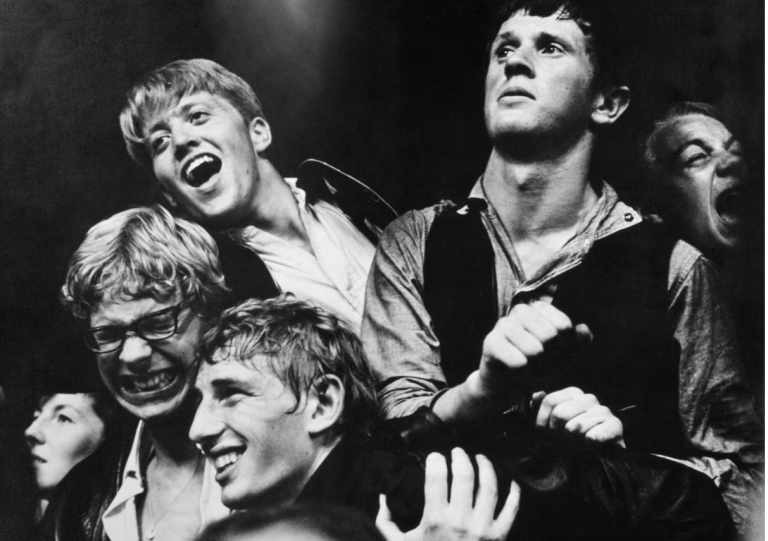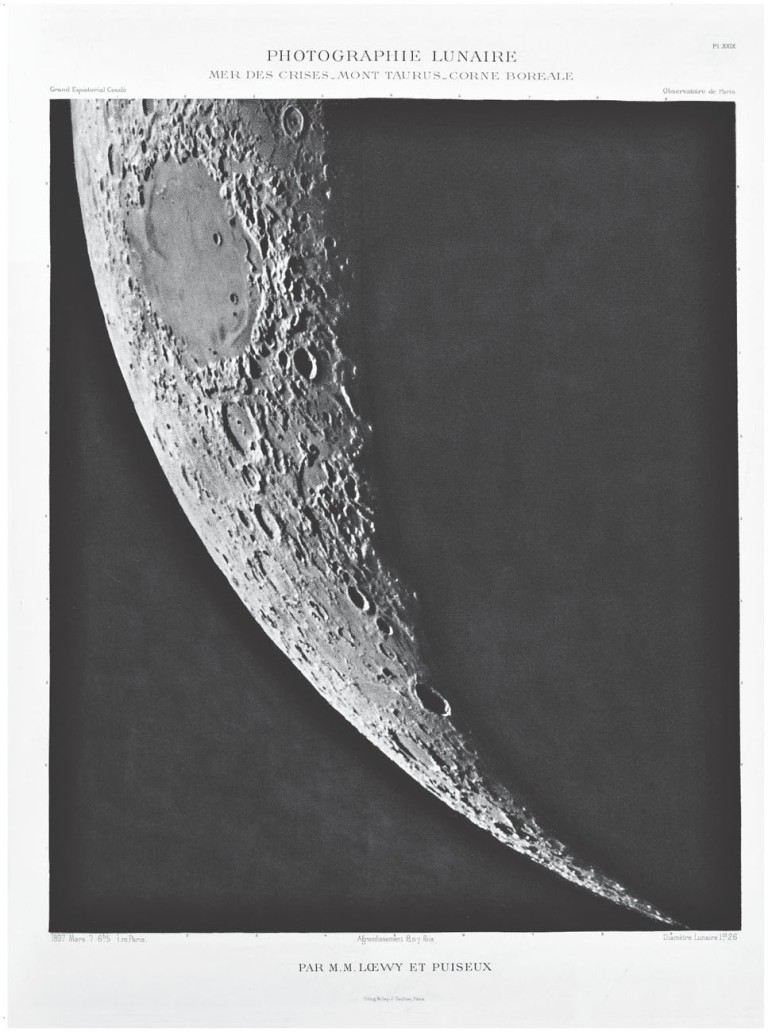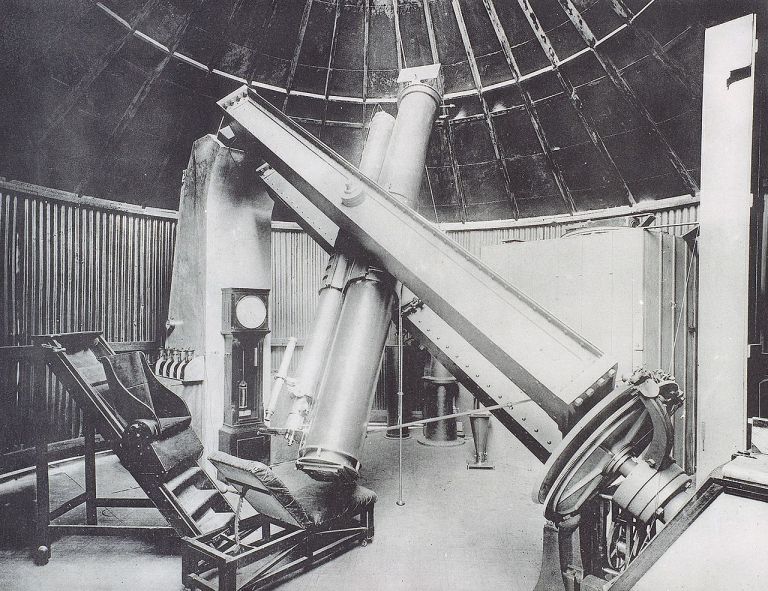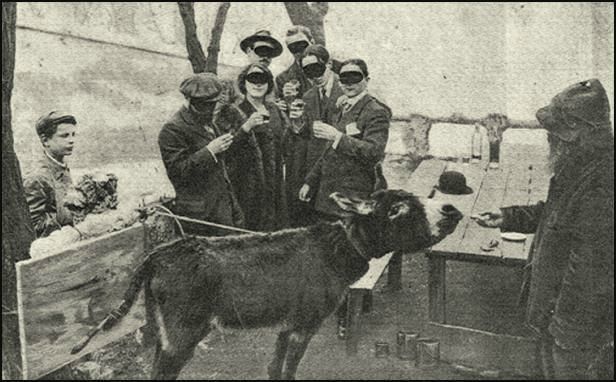 April 15: The chance alignment of photographers, photographs and dates yields unexpected associations of the Beatles, astronomy and a donkey.
April 15: The chance alignment of photographers, photographs and dates yields unexpected associations of the Beatles, astronomy and a donkey.
Yes, the date marks the death in 1995 of Corrie Meyer-Kattenburg (*1910), a Dutch documentary photographer whose crowded 1964 photograph, replete with a gamut of emotion, of Beatles fans at their concert in the small Dutch town of Blokker, won her an award from the camera manufacturer Asahi Pentax and a trip to Japan.

Meyer-Kattenburg’s photographic career had been interrupted by the German occupation of The Netherlands, in which she and her husband Sven Meyer, both of Jewish descent, were deported to Denmark, but then arrested whilst fleeing to Sweden. Sven was transported to Sachsenhausen concentration camp, Corrie Meyer-Kattenburg ended up with their two children in Ravensbruck. Eventually, the family would be reunited in Theresienstadt and somehow survived the war.
In 1947 Corrie Meyer-Kattenburg picked up photography again with determination, first joining an amateur photography club and recording performances by a small theatre company, she participated in competitions, published widely and participated in exhibitions, receiving the title ‘Artiste’ from the international umbrella organisation Fédération Internationale de l’Art Photographique (FIAP).
After winning the Asahi Pentax award Meyer-Kattenburg, in 1967 at the age of 57 and facing financial uncertainty, she set up as a commercial photographer of school groups, portraits and weddings, soon expanding to company reports. She continued working as a photographer until the age of 73.
And again by chance, Maurice (Moritz) Loewy was born on this date in 1833 (†1907). He was a French astronomer who with Pierre Henri Puiseux (1855 – 1928) undertook the first mapping of the Moon, which of course then could only be done with the assistance of photography. Their mapping took a decade and 10,000 photographs to make L’Atlas photographique de la Lune which they completed in 1910.

Their general map of the Moon’s regions was the zenith of lunar photography of the 19th century, imagined by François Arago himself in 1839; such striking, vivid photogravures confirm the extraordinary technical feats of which early astronomical photographers were capable. If you have ever tried to photograph the Moon whether through a telescope, or a telephoto lens powerful enough to resolve its details full-frame, you will have found atmospheric disturbances make it almost impossible to get a sharp undistorted image, or one that is sharp all over. It is like looking through a mirage, as this video by Timothy Estes shows.
The fact that images substantially better than those of Loewy and Puiseux were not obtained until the 1970s, after NASA’s Moon shots, demonstrates the scale of their achievement. A copy sold at Christies in 2013 for $US 5,334.00 and a digital version is still eagerly being purchased on iTunes. Because perfect weather conditions were needed, the project took 14 years to complete. During this period only 50 or 60 nights per year provided workable weather conditions, and from those nights the pair could only produce 4 or 5 usable negatives. Maps of the Moon have craters named Loewy and Puiseux and the asteroid 253 Mathilde is believed to be named after Loewy’s wife.
Victor Puiseux, whose discoveries about the aberration of stellar light, asteroids and lunar dynamics were fundamental, continued his collaboration with Maurice Loewy on another atlas, the never-completed Carte du Ciel project, an overambitious and massive international project, also dependent entirely on photography (from 22,000 plates) to map the positions of millions of stars to the 11th or 12th magnitude, across the entire heavens, by observatories across the globe, including Melbourne and Sydney, here in Australia.

When hunting for images to fit the date, I often turn to Gallica at the Bibliothèque nationale de France, département Estampes et photographie, which is a veritable Aladdin’s Cave of photographs, and many are press pictures which are precisely dated.
Here is one taken this date in 1929 at a place you no doubt have visited, or will, since you are you are interested in art and photography; in Montmartre, the birthplace of modern art, on the rue des Saules, past rue Cortot and the only remaining vineyard in Paris, at the crossroad with rue Vincent.
![Paris_le_père_Fred_du_[...]Agence_de_btv1b9056046j](https://onthisdateinphotography.com/wp-content/uploads/2017/04/paris_le_pc3a8re_fred_du_-agence_de_btv1b9056046j.jpg?w=768)
No doubt this picture is from a ‘human interest’ story of springtime in Paris or the like. The Lapin Agile was saved from closure in 1905 by Aristide Bruant (1851–1925), the famous chansonnier whom Toulouse-Lautrec painted with his huge black hat and red scarf. Bruant rented it to Frédéric Gérard (1860- 1938), an eccentric, gold-hearted musician and potter whose understanding of the interests of the area’s inhabitants ensured its change of clientele from gangsters to artists the like of Picasso, Modigliani and Maurice Utrillo, by offering those who could not afford to pay a free drink and toast, often taking paintings in exchange.
In the photograph he is shown in the cabaret’s tiny garden with perhaps his daughter or granddaughter, or one of the street kids who thronged Montmartre, and the image has been so arranged as to be dominated by an extraordinarily large glazed earthenware pot crammed with new blossoms. Both are warmly dressed for this changeable season and Père Frédé’s bearded face is barely visible beneath his knitted woollen cap.
His adored donkey, who helped him earn income on the side by transporting fish to market, was somewhat of a celebrity in Montmartre, the more so after Roland Dorgelès (1885–1973) and his artist friends got together to play a little trick on the critics, a story now legend in the district.

They entered a semi-abstract, highly coloured oil on canvas Coucher de soleil sur l’Adriatique by an unknown artist Joachim-Raphaël Boronali into the Salon des Indépendants in March 1910.

Writing in the newspaper Le Matin, justice-of-the-peace P. Brionne exposed the hoax in an article illustrated with a carefully arranged tableau of Lolo painting the picture, paint-pots at the ready and with a brush tied to his tail which he wags enthusiastically as Père Frédé treats him to a series of vegetable delicacies, while the masked artist conspirators toast the proceedings.

A rough translation might read:
A rebellious style appeared at the last Salon des Independants with a manifesto and a canvas. With its squirts of cadmium, its splashes of chromium, its cobalt sprays, the picture modestly entitled Et le soleil s’endormit sur l’Adriatique to which the paintings of Monet, Manet, Pissarro and Morticelli cannot hold a candle… and the hitherto unheard name of its author: Joachim-Raphael Boronali, rang the triumphant bugle-horn of the new school with all the sonority of its clear ultramontane vowels…Joachim-Raphael Boronali, a master! For a fortnight, the artworld of Paris paraded before his Soleil sur l’Adriatique, all glorifying, dissecting and emulating the technique. The following manifesto, apparently written with a tube of vermillion by the new master, was widely discussed.
Excess in everything is a strength of the greatest power. The sun can never be too ardent, the sky too green, the sea too red, the darkness too impenetrably black, the heroes too daring, or the flowers too fragrant.
Let us ravage, ravage the absurd museums; let’s trample on the outworn clichés of chocolate-box painters, let’s go with a bold step toward the ultimate goal.
Raise your palettes! Raise your brushes and your colours! Vibrant scarlet, purple, the sparkling jewels of all swirling and intermingling hues are the true reflection of the sublime solar prism!
Let’s not be put off by the shouting of the singed polecats who agonize at La Couple.
No more finesse, no more hesitation, no more exacting craft, but all dazzling, gleaming!
By reading this ‘gospel of colour’, people realised they could be painters who would never have imagined it.
One thing, however, worried the ever-growing choir of Joachim-Raphael Boronali’s disciples: it was the master’s excessive modesty. Where was he hiding? How did he bear this celebrity? No one knew anything of his life, but we imagined him to be proud and labouring in isolation somewhere on the ramparts of Montmartre. And his admirers were weaving him a beautiful crown. Alas! this crown, when it was offered to him, Joachim-Raphael Boronali merely chewed with rustic simplicity, a curious response witnessed in this bailiff’s report. Et le soleil s’endormit sur l’Adriatique and its author J-R Boronali, are just a farce committed by aspiring artists indignant at the lax regulation of the Salon des Independants.
A district officer, I can report that I was taken to the Lapin-Agile cabaret in rue de Saules, Paris, where in front of this establishment, MM. X … and X … had arranged, on a chair acting as an easel, a brand-new virgin canvas. In my presence, blue, green, yellow, and red paints were diluted, and a brush was attached to the rear end of a donkey belonging to the owner of the Lapin-Agile cabaret, all ready for the occasion.
The donkey was then brought and turned in front of the canvas, and Mr. X …with the brush on the tail of the animal, allowed its movement to smear the canvas in all directions, taking care now and then to charge the brush with different colours.
I noticed that this canvas thus accumulated various tones, passing from blue to green and yellow to red, without any organisation and resembling nothing.
After this work was finished, photographs were taken in my presence of the painting and its author.
As a result and from all recounted above, I have drawn up the present minutes to vouchsafe what was witnessed.
Cost: Eighteen francs twenty centimes.
P.Brionne
Will the ‘Unbridled Style’ survive this blow?
The story even reached Russian artist Mikhail Larionov (1881–1964) who issued a manifesto for his avant-garde group who called themselves the “Donkey’s tail”.
Alas, I cannot find the photographer’s name.

